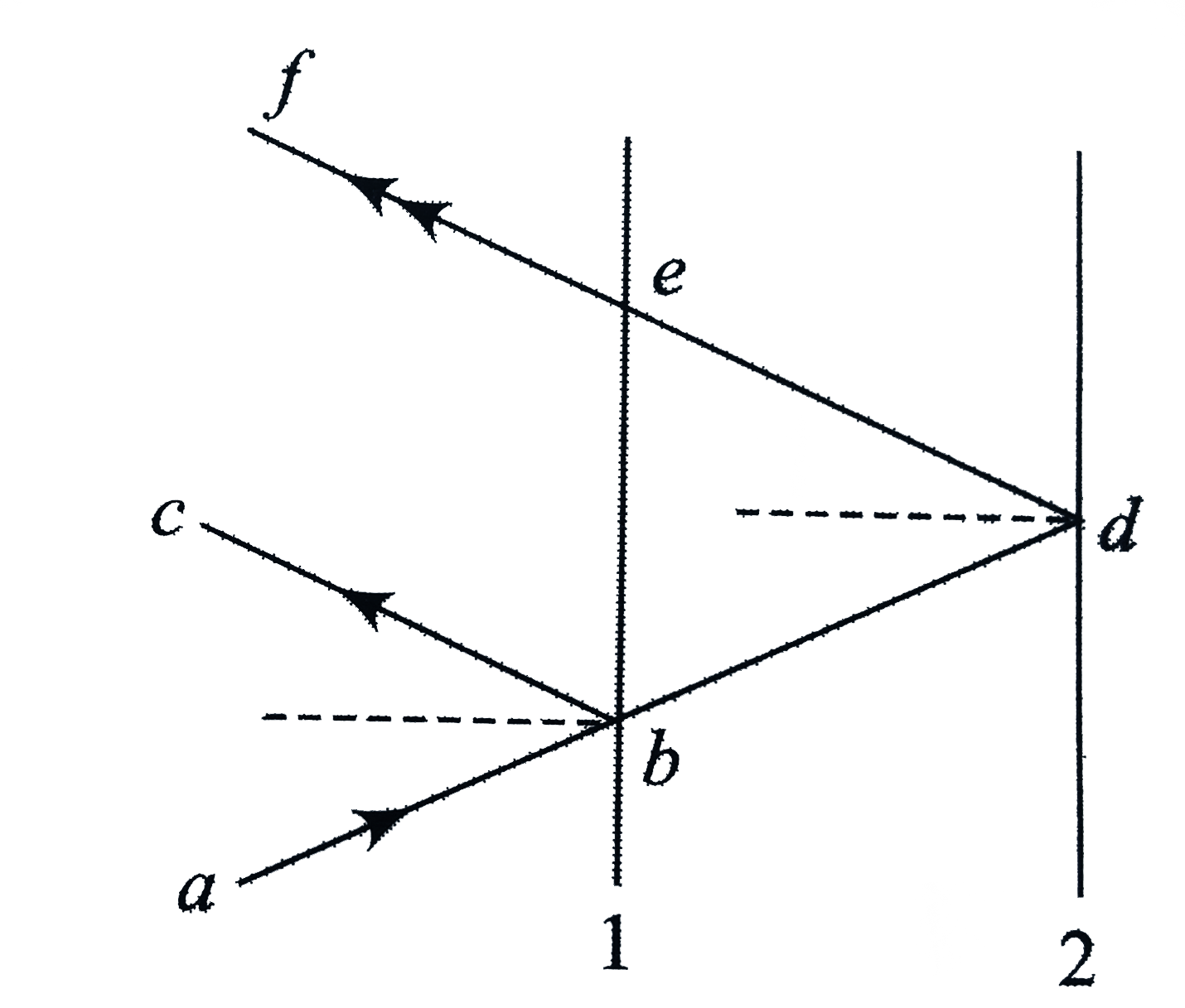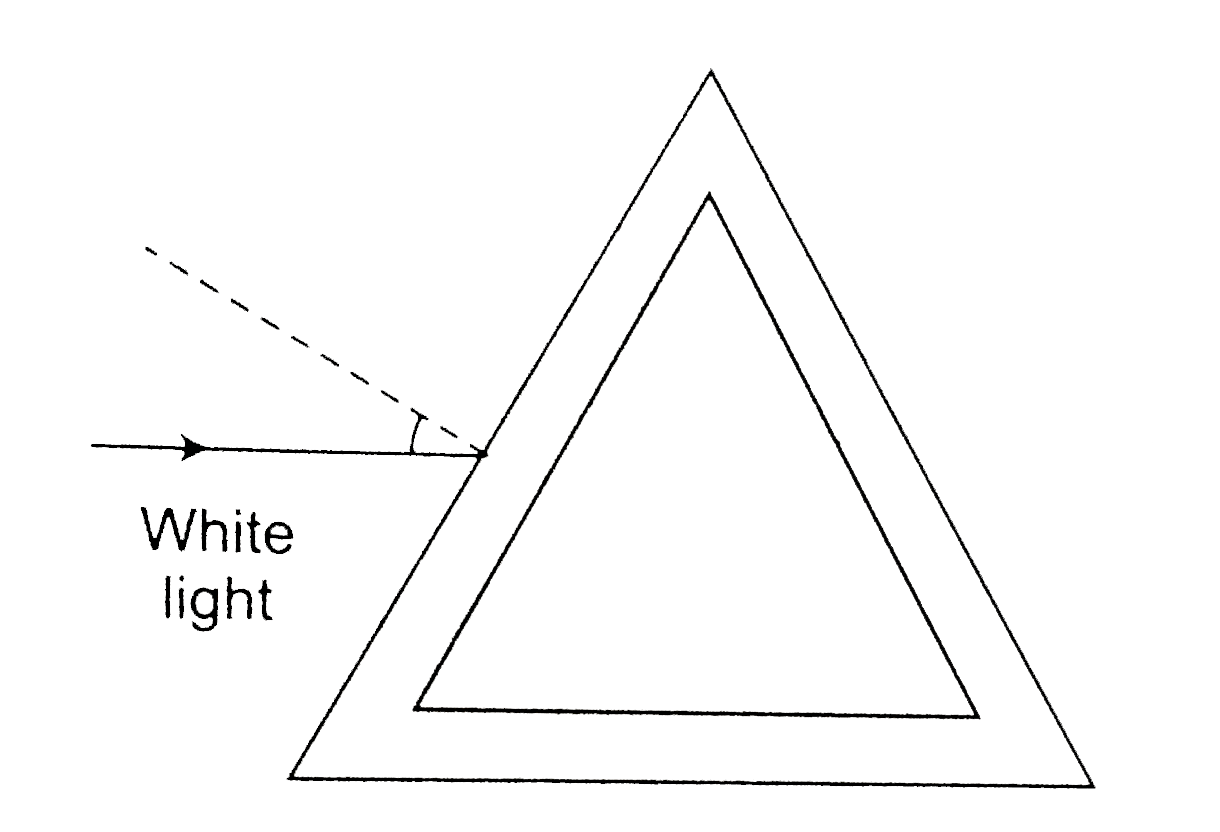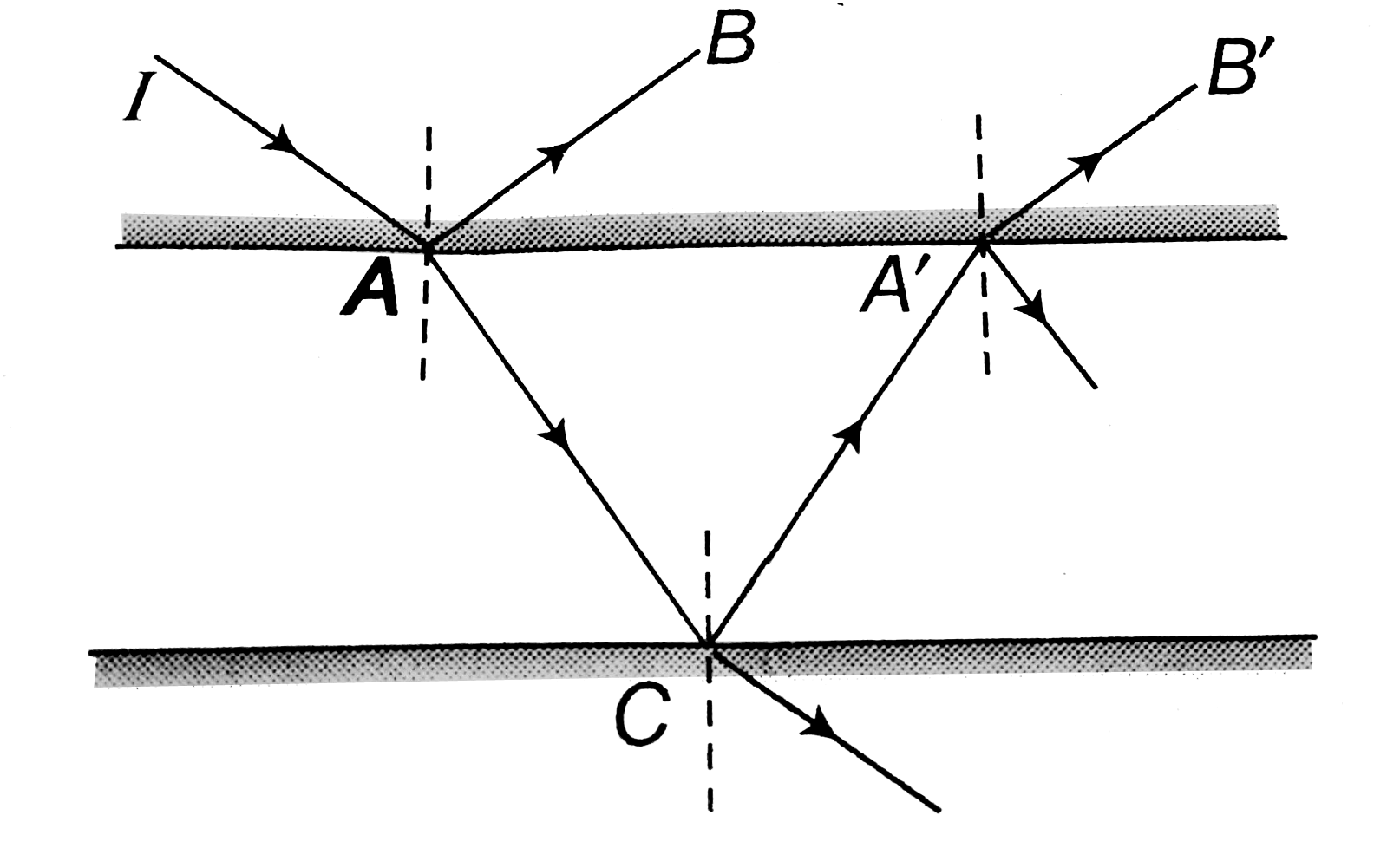_E01_107_Q01.png)
A narrow monochromatic beam of light of intensity I is incident on a galss plate as shown in figure. Another identical glass plate is kept close to the first one & parallel to it. Each glass plate reflects 25% of the light incident on it % transmits the remaining find the ratio of the minimum & the maximum intensities in the interference pattern formed by the two beams obtained after one reflection at each plate.
The correct Answer is:49
N//a
Topper's Solved these Questions
- WAVE OPTICSBook:RESONANCEChapter:WAVE OPTICSExercise:Exercise-2 (Part-3)
Explore 5 Videos
- WAVE OPTICSBook:RESONANCEChapter:WAVE OPTICSExercise:Exercise-2 (Part-4)
Explore 8 Videos
- WAVE OPTICSBook:RESONANCEChapter:WAVE OPTICSExercise:Exercise-2 (Part-1)
Explore 10 Videos
- WAVE ON STRING Book:RESONANCEChapter:WAVE ON STRING Exercise:Exercise- 3 PART I
Explore 19 Videos
Similar Questions
A narrow monochromatic beam of light of intensity I is incident on a glass plate. Another identical glass plate is kept close to the first one and parallel to it. Each plate reflects 25% of the incident light and transmits the remaining. Calculate the ratio of minimum and maximum intensity in the interference pattern fromed by two beams obtained after reflection from each plate.
View SolutionA narrow monochromatic beam of light of intensity 1 is incident on a glass plate as shown in figure Another identical glass plate is kept close to the first one and parallel to it. Each glass plate reflects 25% of the light incident on it and transmits intensities in the interference pattern formed by two beams obtained after one reflection at each plate.

View Solution
Knowledge Check
A beam of white light is incident on a hollow prism of glass. Then
 Athe light emerging from prism gives spectrum but the bending of all colours is always from baseBthe light emerging from prism gives spectrum, all the colours bend towards the base, the violet must and red and leastCthe light emerging from prism gives spectrum, all the colours bend towards base, the red the least and violet the mostDthe light emerging from prism gives no spectrum
Athe light emerging from prism gives spectrum but the bending of all colours is always from baseBthe light emerging from prism gives spectrum, all the colours bend towards the base, the violet must and red and leastCthe light emerging from prism gives spectrum, all the colours bend towards base, the red the least and violet the mostDthe light emerging from prism gives no spectrumA ray of unpolarised light is incident on a glass plate at the polarising angle θp. Then
AThe reflected ray and transmitted rays both will be completely polarisedBThe reflected ray will be completely polarised and the transmitted ray will be partially polarisedCThe reflected ray will be partially polarised and the completely ray will be partially polarisedDThe refected and transmitted rays both will be partially polarised.A ray of light intensity I is incident on a parallel glass-slab at a point A as shown in figure. It undergoes partial reflection and refraction. At each reflection 25% of incident energy is reflected. The rays AB and A′B′ undergo interference. The ratio Imax/Imin is
 A49:1B7:1C4:1D8:1
A49:1B7:1C4:1D8:1
Two thin glass plates are placed parallel to each other such that distance between them is very small. Each glass plate reflects 25% of incident energy and transmits remaining 75% Light beam is incident on this system. Consider the interference of two light beams obtained after one reflection from each glass plate. Calculate ratio of the maximum to minimum intensity.
View Solution(a) If one of two identical slits producing interference in Young's experiment is covered with glass so that the light intensity passing through it is reduced to 50%, find the ratio of the maximu and minimum intensity of the fringe in the interference pattern.
(b) What kind of fringes do you expect to observe if white light is used instead of monochromatic light ?
View Solution_E01_093_Q01.png)
A ray light of intensity I is incident on a parallel glass-slab at a point A as shown in figure it undergoes partial reflection and refraction. At each reflection 20% of incident energy is refracted rays AB and A'B' undergo interference find the ratio Imax/Imin
View SolutionA ray of unpolarised light is incident on a glass plate at the polarising angle of 57∘ .
Now,
View SolutionA ray of light intensity I is incident on a parallel glass-slab at a point A as shown in figure. It undergoes partial reflection and refraction. At each reflection 25% of incident energy is reflected. The rays AB and A′B′ undergo interference. The ratio Imax/Imin is

View Solution

